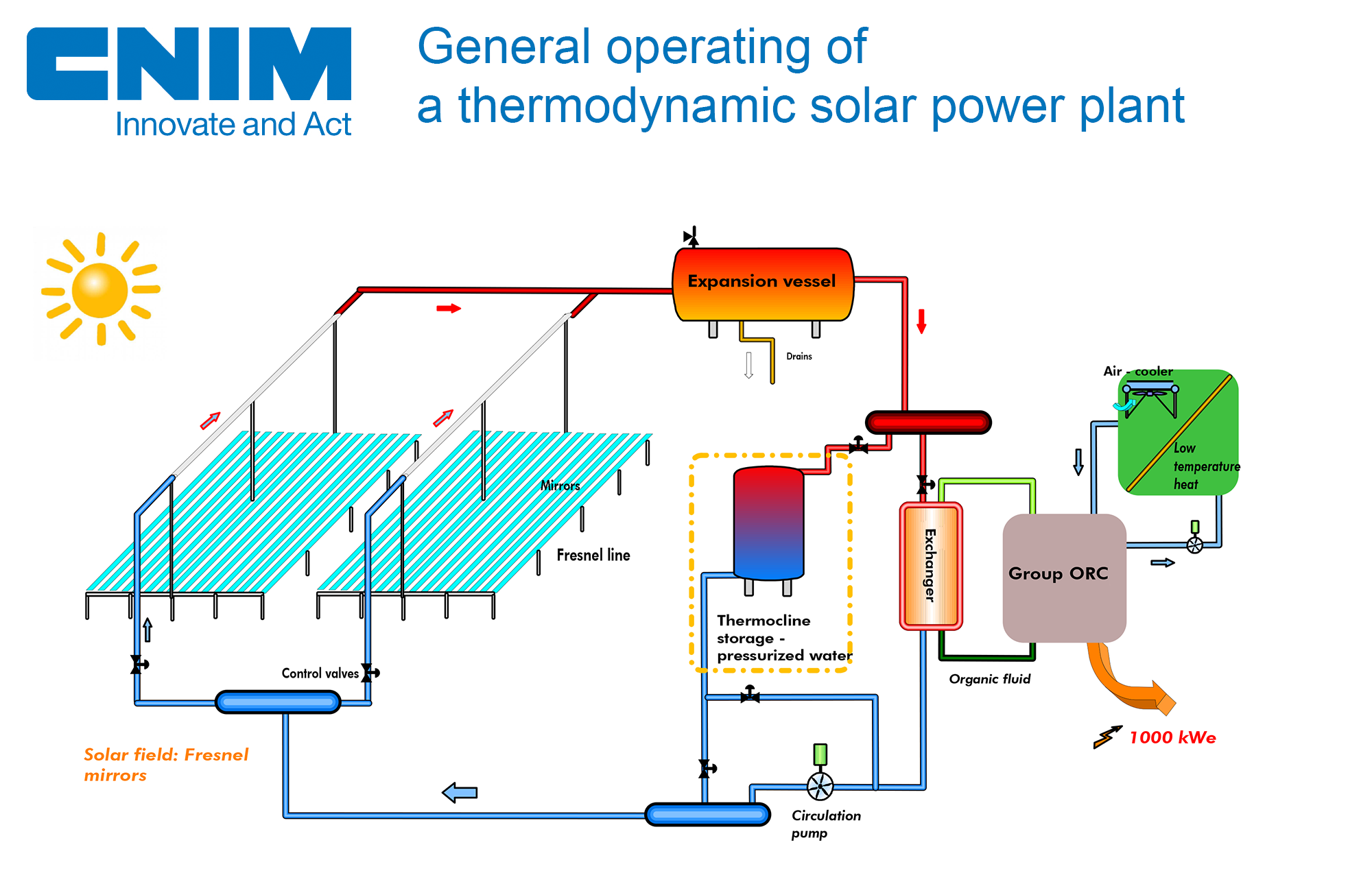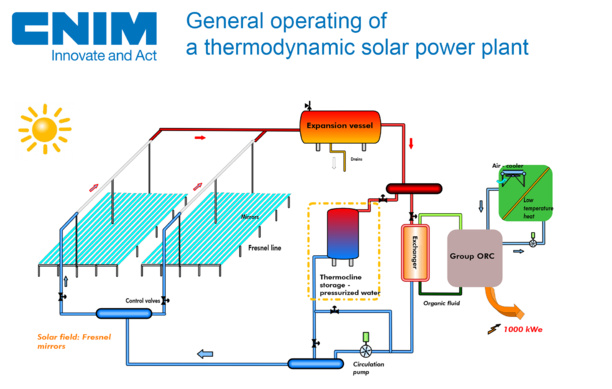In June 2014, Munich hosted Intersolar, the largest Trade Show for solar energies, where the world leaders in the field display new technologies to be available later on the global market. France’s photovoltaic sector has been an industry leader for years and was a big hit at Intersolar.
The 2013-2017 Global Market Outlook report, released by the European Photovoltaic Industry Association (EPIA), states that solar energy now accounts for a “worldwide output in excess of 100,000 MW” (1). France ranks third European country, behind Germany, which generates close to a third of solar energy produced worldwide, 32.4 Gigawatts (GW). French solar-powered installations connected to the grid takes an overall total of 4.33 GW in 2014 and is constantly increasing.
In 2013, the French government demonstrated its support for the solar sector by introducing measures to help it reach a target of at least 1,000 Megawatts (MW) in solar projects every year. But if the attention has been focused on the photovoltaic industry, the long-term solution for solar power might actually come from Concentrated Solar Power (CSP). This technology has less exposure than conventional photovoltaic technologies, but is cheaper, takes less land space and offering more options.
CNIM, among world’s leaders in building boiler and furnace systems with over 30 years of experience in the solar energy sector, is now back on the market using Linear Fresnel Reflector (LFR) technology. This technology doesn’t use photovoltaic cells to transform light into energy. Instead, it uses many mirrors that reflect towards the same receiver tube of pressurized water creating high temperature and pressure, which, when released, creates a steam that discharges energy powering electricity-production systems.
The LFR technology presents several major advantages. The mirrors used with the technology are simpler and less expensive than the parabolic-shaped solar mirrors. The absorber tube is also simpler, less expensive and doesn’t need couplings. It also takes much less land space than photovoltaic generated plants, as the mirror reflection converging to the same point can create a really high temperature inside the tube.
One of the issues that was raised when building large plants in desert areas was the problem of sand storms and dust that could potentially paralyze such a solar power plant. Solar power installations are also exposed to weather-related issues, even in areas that get almost 365 days of sun a year. Florent Cassar, project head in the Solar Energy Division at CNIM, explained how this issue can be addressed with accurate weather forecasts, stating “what we see on the mirrors are dust and aerosols from the desert. Those are harmful to our facilities because they reduce the incoming solar energy impacting on our system. If we know a few days in advance that a dust storm is coming, we will store surplus energy so that it can be used on the days where there isn’t sufficient solar energy to operate the installation. At the moment, this storage works with pressurized water; so there are kinds of big cans than will store water at a very high pressure and a very high temperature. When we want to discharge this energy, we will use the steam present in these containers to power the electricity-production systems” (2).
And as solar is becoming increasingly important as a source of renewable power generation, predicting when a sand storm is coming, even in remote areas in the desert, is crucial. Not only are they now able to do so and therefore make the plant operable, which was never the case before, but it is also possible to store some of the produced energy and keep the plant running at night, a tremendous progress never possible in the past. Therefore, these plants have the potential to be operational everyday regardless of the potential and unpredictable extreme weather conditions.
Because of CNIM’s long history and reputation for being one of the best boiler and furnace systems manufacturer in the world, it has the potential to take the lead in the future of solar energy. The LFR technology hasn’t been applied to really large scale plants just yet, but it will be in the near future. Due to its low cost environmentally friendly approach, LFR seems to be headed for the major upcoming projects in areas where weather, space and long-term investment are a concern.
(1) France’s photovoltaic sector shines bright at INTERSOLAR 2014, EU Business, Ubifrance, April 29th 2014.
(2) Demystifying solar energy, Euronews, May 13th 2014
The 2013-2017 Global Market Outlook report, released by the European Photovoltaic Industry Association (EPIA), states that solar energy now accounts for a “worldwide output in excess of 100,000 MW” (1). France ranks third European country, behind Germany, which generates close to a third of solar energy produced worldwide, 32.4 Gigawatts (GW). French solar-powered installations connected to the grid takes an overall total of 4.33 GW in 2014 and is constantly increasing.
In 2013, the French government demonstrated its support for the solar sector by introducing measures to help it reach a target of at least 1,000 Megawatts (MW) in solar projects every year. But if the attention has been focused on the photovoltaic industry, the long-term solution for solar power might actually come from Concentrated Solar Power (CSP). This technology has less exposure than conventional photovoltaic technologies, but is cheaper, takes less land space and offering more options.
CNIM, among world’s leaders in building boiler and furnace systems with over 30 years of experience in the solar energy sector, is now back on the market using Linear Fresnel Reflector (LFR) technology. This technology doesn’t use photovoltaic cells to transform light into energy. Instead, it uses many mirrors that reflect towards the same receiver tube of pressurized water creating high temperature and pressure, which, when released, creates a steam that discharges energy powering electricity-production systems.
The LFR technology presents several major advantages. The mirrors used with the technology are simpler and less expensive than the parabolic-shaped solar mirrors. The absorber tube is also simpler, less expensive and doesn’t need couplings. It also takes much less land space than photovoltaic generated plants, as the mirror reflection converging to the same point can create a really high temperature inside the tube.
One of the issues that was raised when building large plants in desert areas was the problem of sand storms and dust that could potentially paralyze such a solar power plant. Solar power installations are also exposed to weather-related issues, even in areas that get almost 365 days of sun a year. Florent Cassar, project head in the Solar Energy Division at CNIM, explained how this issue can be addressed with accurate weather forecasts, stating “what we see on the mirrors are dust and aerosols from the desert. Those are harmful to our facilities because they reduce the incoming solar energy impacting on our system. If we know a few days in advance that a dust storm is coming, we will store surplus energy so that it can be used on the days where there isn’t sufficient solar energy to operate the installation. At the moment, this storage works with pressurized water; so there are kinds of big cans than will store water at a very high pressure and a very high temperature. When we want to discharge this energy, we will use the steam present in these containers to power the electricity-production systems” (2).
And as solar is becoming increasingly important as a source of renewable power generation, predicting when a sand storm is coming, even in remote areas in the desert, is crucial. Not only are they now able to do so and therefore make the plant operable, which was never the case before, but it is also possible to store some of the produced energy and keep the plant running at night, a tremendous progress never possible in the past. Therefore, these plants have the potential to be operational everyday regardless of the potential and unpredictable extreme weather conditions.
Because of CNIM’s long history and reputation for being one of the best boiler and furnace systems manufacturer in the world, it has the potential to take the lead in the future of solar energy. The LFR technology hasn’t been applied to really large scale plants just yet, but it will be in the near future. Due to its low cost environmentally friendly approach, LFR seems to be headed for the major upcoming projects in areas where weather, space and long-term investment are a concern.
(1) France’s photovoltaic sector shines bright at INTERSOLAR 2014, EU Business, Ubifrance, April 29th 2014.
(2) Demystifying solar energy, Euronews, May 13th 2014


 CNIM is re-entering to the race for solar
CNIM is re-entering to the race for solar





 Companies
Companies